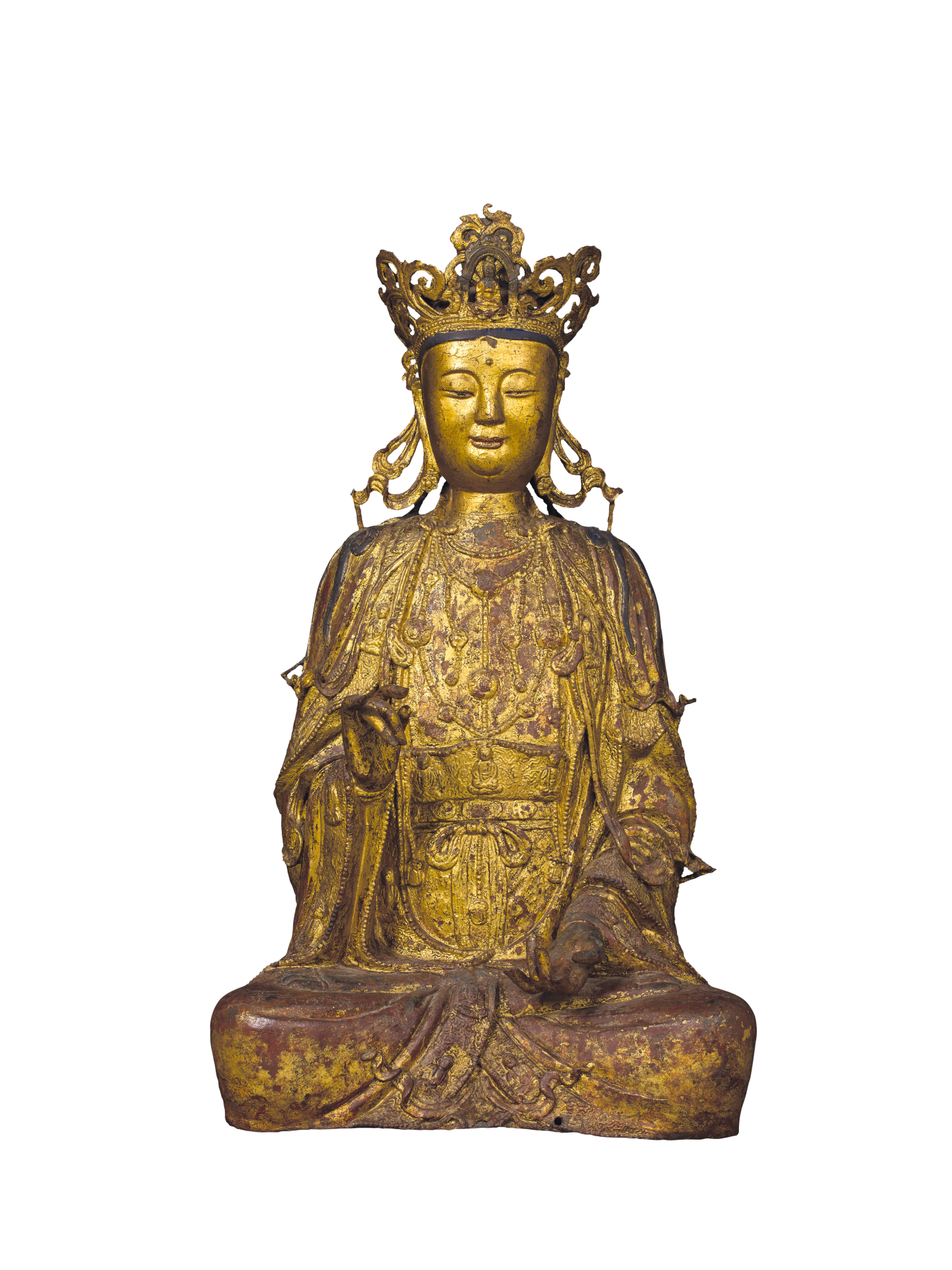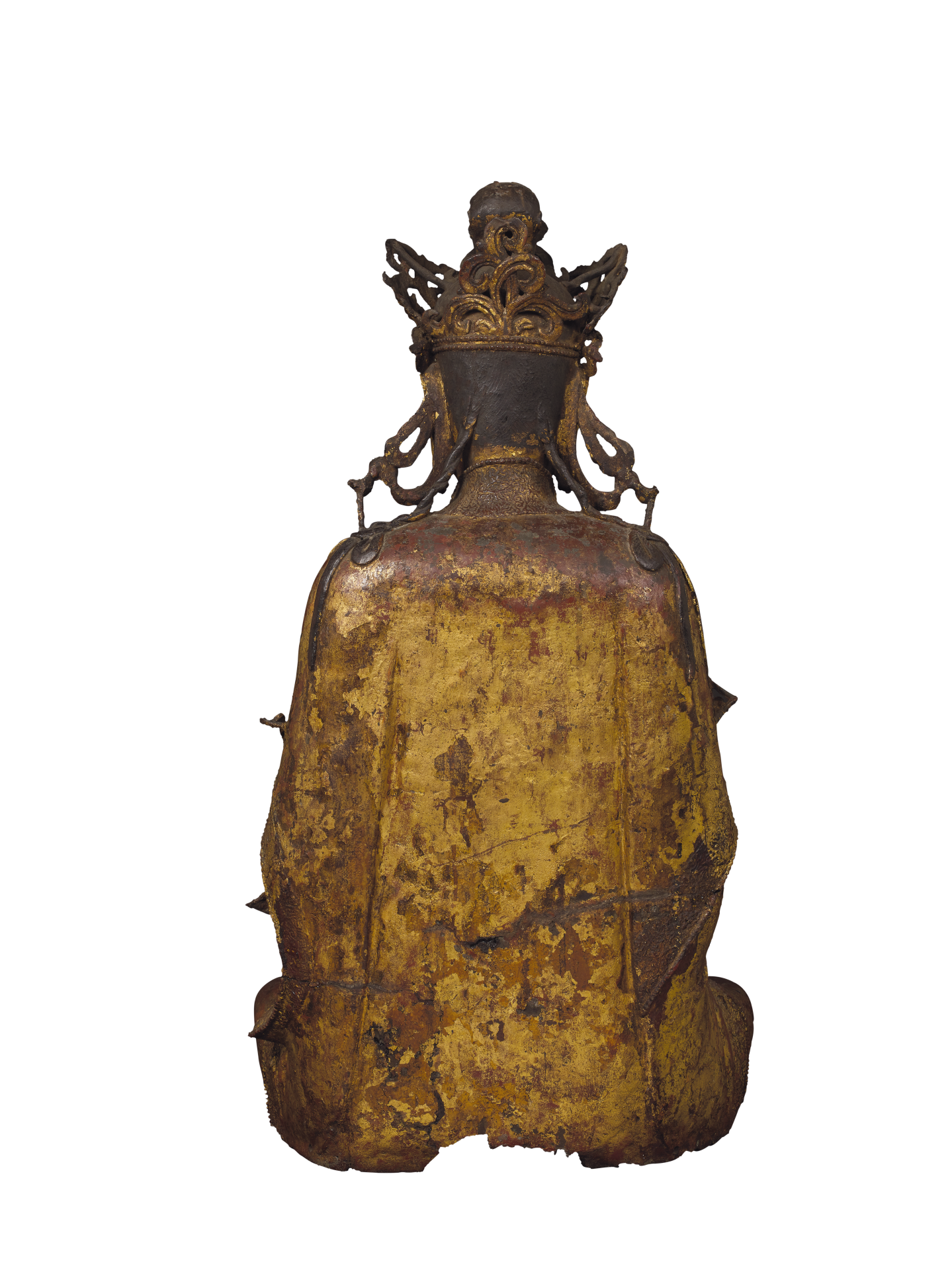Seated Guanyin Bodhisattva
Gold lacquering on bronze process begins when raw lacquer is coated over the statue’s surface. After it gets dry, colloidal gold is applied onto the surface. This technique protects the metal from rust and erosion. Since colloidal gold coating will come off easily, the oxidised raw lacquer layer of dark brown colour underneath the coating is often exposed. Due to this reason, the gilt of this statue has gone flaky, but fortunately been largely preserved. Serious peeling is only found around the lower body.
This Bodhisattva Guanyin statue wears a tall topknot with braids of hair cascading over the shoulders and forearms, floral-shaped ear ornaments, a regal crown with openwork tendril design and the Amitābha Buddha image in ‘meditation gesture’ and ‘lotus posture’ (padmāsana) at the centre front. The ribbons draping from the sides of the crown form a loop before hanging down behind the ears and scrolling above the shoulders. The Bodhisattva has a squarish face, well-proportioned facial features, relatively flat cheeks, broad upper eyelids, long narrow eyes, a broad flat nose, a delicate mouth with thin lips, and a smiley countenance. The upper body is exposed apart from the shawl and the elaborate and splendid strings of jewellery. The lower body is wrapped in a long skirt. The Bodhisattva is seated with legs locked in ‘lotus posture’ (padmāsana). The attributes held in the hands are gone. The right hand is raised to the front of the belly and has the thumb and index finger touching each other. The left hand with palm up is resting near the knee.
This Guanyin statue also has a lean physique, squarish shoulders, a flat chest and a slightly forward tilted head. The modelling of the lower body is not well-refined, as the legs are slab-like and the soles lack three-dimensionality. The decorations on the shawl and skirt are exquisitely depicted, with seated Buddha images, clouds and continuous beads chiselled along the borders. All these seated Buddhas are in ‘meditation gesture’ and ‘lotus posture’ (padmāsana). The Amitābha Buddha image found in the crown is an important iconic feature identified with Guanyin. It must be noted that the practice of decorating the shawl and skirt with seated Buddha images is rarely seen, and therefore makes this statue a true rarity.

